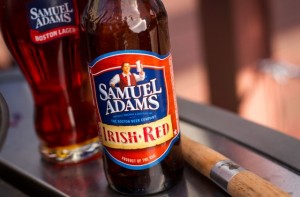Are You a Radical Marketer?

There are brands that manage to build a fanatical following. Think Harley Davidson. Think Harvard Business School. Think Virgin Atlantic Airways. Or think Apple. We all admire these brands for the passionate response that they generate from their users. I am sure all of us would want to elicit a similar response from the consumers for our brands. Sadly, most of us just don’t get that fervent affection for our brands. The question then is: how do some brands manage to do it? What is their mantra?
In their book, ‘Radical Marketing: From Harvard to Harley Lessons from Ten That Broke the Rules and Made it Big.’ Sam Hill and Glenn Rifkin researched companies which had built legendary customer loyalty. These included Harley Davidson, HBS, Virgin Atlantic Airways, Iams pet food, Snap-on-Tools, Samuel Adams beer, NBA and even the Grateful Dead. From the research and interviews that they conducted, Hill and Rifkin distilled the secrets of the companies. They built these into a set of rules.
Most radical marketers started their journey in not always auspicious circumstances: in some cases, they were in financial doldrums and in others they just didn’t have enough resources. However, what they lacked in terms of resources, they made up with passion and determination. These were three characteristics that defined radical marketers:
- They had very strong intuitive ties with a specific target audience
- They tended to focus on growth and expansion rather than profits
- They were resource constrained and made things work with very limited budgets
Based on their study of the ten companies and others, Hill and Rifkin laid out a set of prescriptive rules, or commandments if you like, that traditional marketers, desirous of following the radical marketers, should emulate:
- The CEO must own the marketing function. CEOs of radical marketers never delegate marketing responsibilities; instead, they prefer to act as the Chief Marketing Officers of their companies.
- Make sure the marketing department starts small and flat and stays small and flat. CEOs must have marketing people who are in close touch with consumers on an on-going basis. Creating layers of management is a sure way of create a distance between senior management and the consumers. If you are working for a ‘traditional’ marketing company, you would agree with this guideline.
- Get face-to-face with the people who matter the most – the customers. Radical marketers are very strong believers in direct interaction with customers. They will always find time to interact with customers and gain valuable insights in the bargain.
- Use market research cautiously. Market research typically tells a marketer what the average customer wants. Radical marketers prefer grassroots techniques. They would rather believe what they have heard from the horse’s mouth.
- Hire only passionate missionaries. Radical marketers don’t have marketers, they have missionaries. Jeff Bezos of Amazon said this once: ‘I strongly believe that missionaries make better products. They care more. For a missionary, it’s not just about the business. There has to be a business, and the business has to make sense, but that’s not why you do it. You do it because you have something meaningful that motivates you.’
- Love and respect your customers. Radical marketers respect customers as individuals, not as numbers on a spreadsheet. They recognise that the core customers are responsible for the bulk of their success. That is why they listen to them very carefully.
- Create a community of consumers. Radical marketers encourage their customers to think of themselves as a community, and a brand as the unifier of that community. All radical marketers spend a lot of time and effort in creating effective tribes.
- Rethink the marketing mix. The marketing techniques of radical marketers often differ dramatically from those used by traditional marketers. For example, traditional marketers seek to reach broad audiences via large scale advertising; radical marketers, on the other hand, often use surgical strike advertising characterised by short, targetted ad campaigns.
- Celebrate common sense. Smaller companies with limited resources cannot hope to compete with larger competitors without fresh and different marketing ideas. So radical marketers, for example, limit distribution in order to create loyalty and commitment among their distributors and their customers.
- Be true to the brand. Radical marketers are obsessive about brand integrity and they are fixated on quality. While Hill and Rifkin did not cover some of the more recent brands, one just has to look at a brand like Apple to understand what they mean.
It is easy to do things the way they have been done in the past. It requires courage and passion to do things differently and that is what radical marketers do. More importantly, they make it a point to see that the consumer is at the absolute centre of everything that they do.
Sources: Marketing Management, Philip Kotler.
Visual courtesy: https://www.flickr.com/photos/anotherpintplease/
